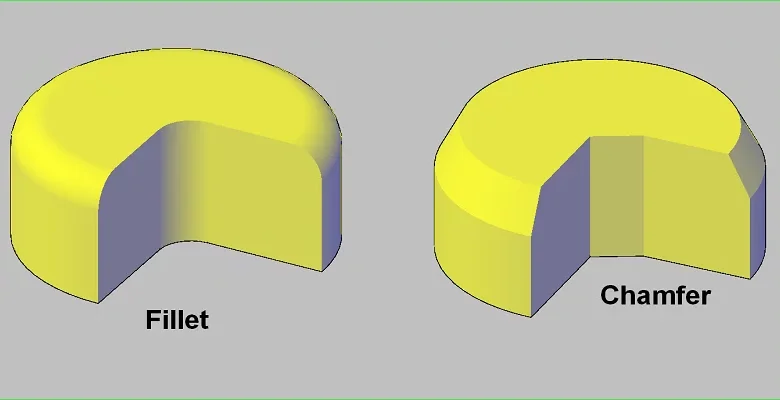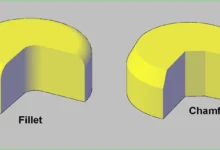
In the realm of engineering and product design, the distinction between Fillet vs chamfer is critical. These machining operations, though related, serve distinct purposes and are indispensable in creating precise and durable components.
What is a Fillet?
A fillet is a rounded corner, typically added to reduce stress concentrations and improve the strength of a part. It involves rounding off an interior or exterior corner to create a smooth, curved transition. Fillets are essential in parts where stress concentration could lead to failure, such as in mechanical components and structural elements. By eliminating sharp corners, fillets distribute stresses more evenly, enhancing durability and reducing the likelihood of cracks or fractures.
What is a Chamfer?
On the other hand, a chamfer is a beveled edge or corner formed by cutting away the right angle. Unlike fillets, which create a rounded edge, chamfers create a straight-line edge at an angle (typically 45 degrees or less). Chamfers are commonly used for aesthetic purposes to remove sharp edges, facilitate assembly, or to prevent damage to surfaces during handling. They are also utilized in applications where parts need to fit together with a precise alignment, such as in woodworking, metalworking, and architectural detailing.
Key Differences and Applications
- Purpose:
- Fillet: Primarily used to enhance strength by reducing stress concentrations.
- Chamfer: Used for easing edges, improving aesthetics, and aiding in assembly.
- Edge Profile:
- Fillet: Creates a rounded profile.
- Chamfer: Creates a flat, angled profile.
- Applications:
- Fillet: Ideal for parts subjected to mechanical stress, such as machine components and brackets.
- Chamfer: Commonly used in woodworking, metalworking, and architectural designs to prevent splintering, facilitate joining, or enhance visual appeal.
Choosing Between Fillet and Chamfer
The choice between fillet and chamfer depends on the specific requirements of the part or product being designed. Engineers and designers consider factors such as structural integrity, aesthetics, manufacturing methods, and functional requirements when deciding which operation to apply. For instance, while a fillet might strengthen a critical load-bearing component, a chamfer might be more suitable for improving the handling and appearance of a consumer product.
Conclusion
In conclusion, while fillet and chamfer operations share the goal of removing sharp edges, they serve distinct purposes in engineering and design. Understanding their differences and applications is essential for producing high-quality, functional, and aesthetically pleasing products across various industries. Whether you’re enhancing the strength of a mechanical part with a fillet or improving the assembly of a woodworking project with a chamfer, choosing the right edge treatment can significantly impact the performance and durability of your final product.





